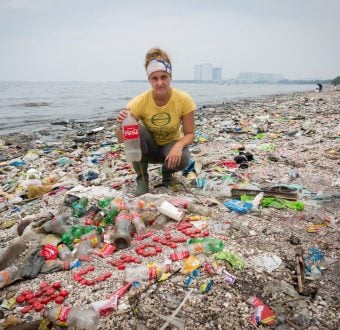The EPA estimates that cancer risk from dioxin exposure to the
general population is now as high as one in one hundred, according
to recently leaked EPA briefing documents from an internal Agency
briefing on May 10th. One cancer in one hundred is equal to 2.7
million cancer deaths in the US population (270 million). This is
the first time, after nine years of study, that the EPA concluded
that dioxin was a human carcinogen.
The EPA document, which has been in preparation for nine years,
says, “It is likely that part of the general population is at, or
near, exposure levels where adverse effects can be anticipated.”
This also includes non-cancer health effects such as developmental
toxicity, immunotoxicity, endometriosis and diabetes.
“This means that dioxin levels in the bodies of newborn babies
are already at levels that put them at risk of serious illness,”
said Rick Hind, Legislative Director for Greenpeace’s Toxics
Campaign. “In a letter to the EPA today Greenpeace called upon the
EPA to immediately release the dioxin report and implement a Dioxin
Emergency Action Plan to prevent and eliminate new dioxins. This is
the best moment in history to tell the giant chlorine producers,
such as Dow Chemical, that judgement day is finally here and
stalling will no longer be tolerated.” he added.
Another key finding in the EPA report: “Air deposition onto
plants consumed by domestic meat and dairy animals is the principle
route for contamination of commercial food supply.” Dioxin is an
accidental by-product of using chlorine in making products such as
plastics (PVC), solvents and paper bleaching. Incinerators produce
dioxin because they burn chlorine-laden wastes.
“Fortunately most dioxin exposures are preventable. The EPA
report proves that a hundred years ago, before the chemical
industry began using so much chlorine, there was little dioxin in
the environment, our food or our bodies,” said Hind.
The EPA report goes on to say, “There remain unaddressed and
uncharacterized sources….” including “reservoir sources [in
soils, sediments and vegetation] are a significant component of
current exposure and may dominate future exposure.”
Local and global examples of high profile issues that will be
effected by this report include:
- The EPA’s latest review of the safety and legality of the WTI
incinerator in East Liverpool, Ohio, located 1,100 feet from an
elementary school. - EPA decisions on whether to allow the dioxin laden PVC industry
to expand in Lake Charles, Louisiana, where dioxin levels are four
times the national average in the blood of local citizens. - The US State Department’s dioxin policy at current UN treaty
negotiations should be modified to reject chemical industry
pressure and support dioxin “elimination” weak plans for
unspecified “reductions.”
For 15 years Greenpeace has advocated a dioxin prevention
strategy through a materials substitution policy. Such a policy
would require chlorine-free substances in the manufacture of
products. The largest single user of chlorine today is PVC (vinyl)
plastics. Read “Dioxin From Cradle to Grave.”

